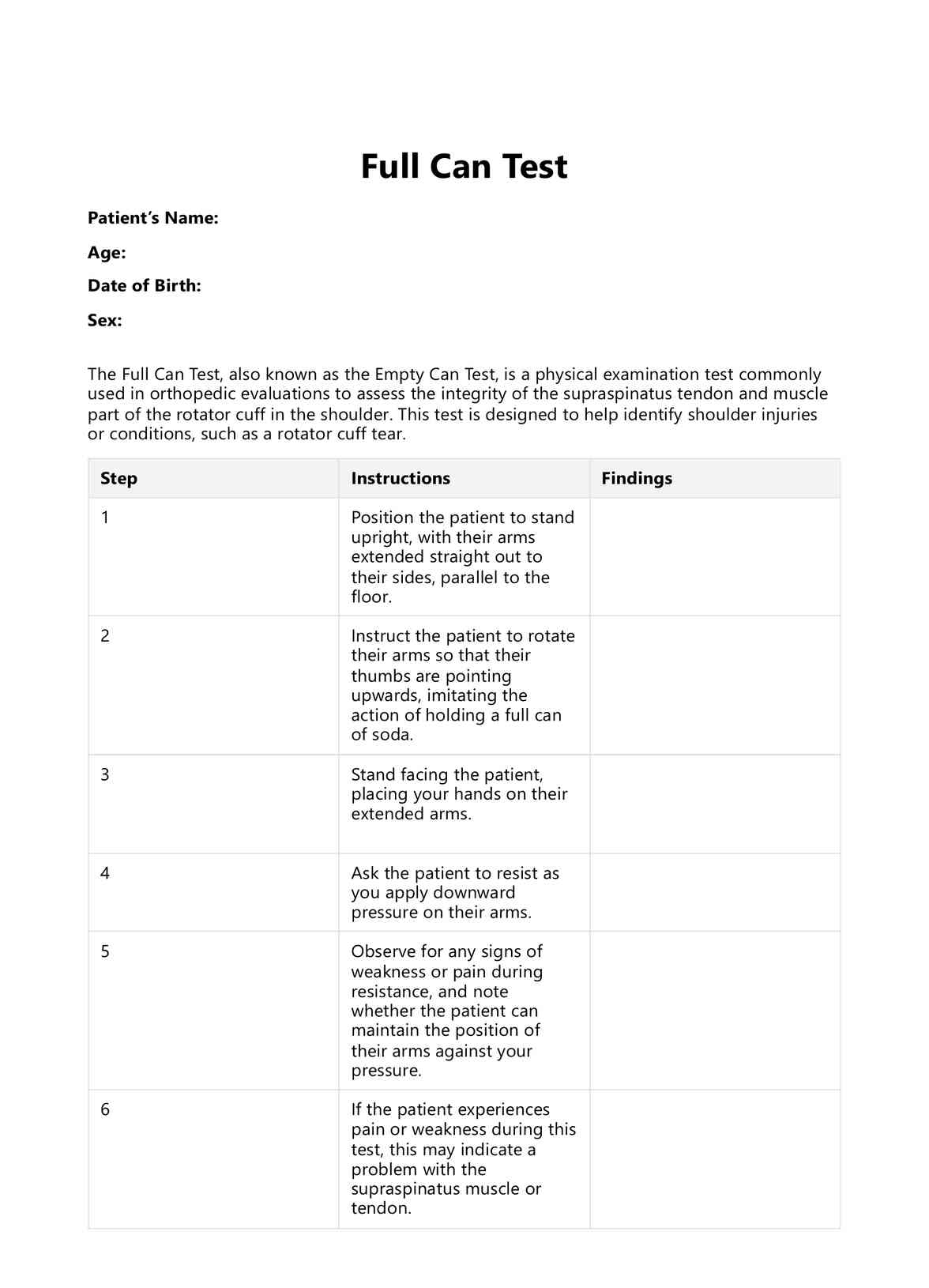The Full Can Test involves the patient standing upright, extending their arms to the sides, and rotating them so their thumbs pointing upwards. The examiner then applies downward pressure on the arms while the patient resists.

Full Can Test
Dive into the details of the Full Can Test, a vital tool in orthopedic evaluations for detecting potential shoulder injuries. Download our free PDF for a comprehensive guide!
Use Template
Full Can Test Template
Commonly asked questions
The Full Can Test is designed to evaluate the integrity of the supraspinatus muscle and tendon, part of the shoulder's rotator cuff.
Between-session reliability refers to the consistency of the test results when performed at different times. A high between-session reliability in the Full Can Test means that the test results are consistent and reliable over multiple sessions.
EHR and practice management software
Get started for free
*No credit card required
Free
$0/usd
Unlimited clients
Telehealth
1GB of storage
Client portal text
Automated billing and online payments











